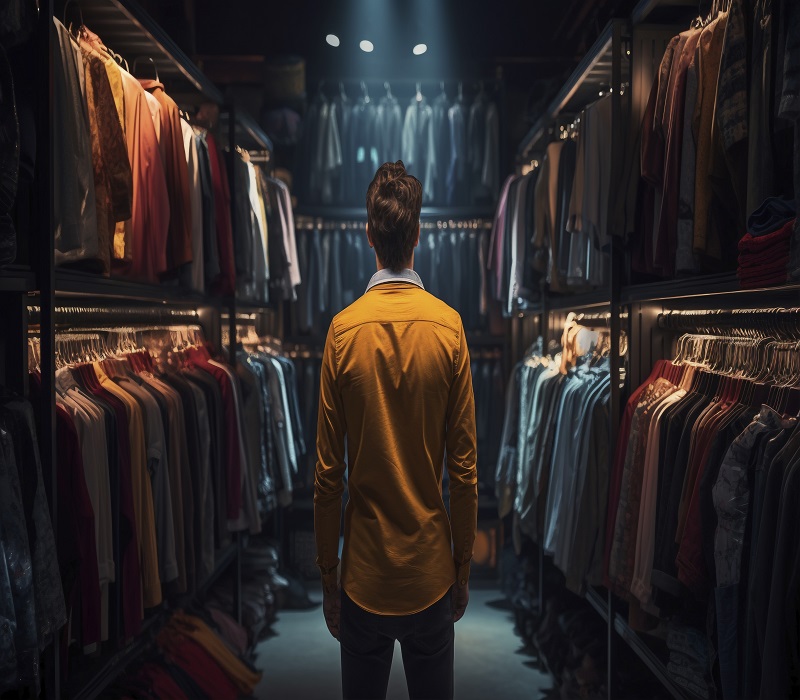Introduction
Artificial intelligence has reached a point where it can alter reality in unsettling ways. One such controversial innovation is the AI clothes remover—a tool that uses deep learning to digitally “undress” people in photos. While some dismiss it as a harmless prank, others warn it’s a gateway to privacy violations and harassment.
This article cuts through the hype, explaining how these tools work, their ethical risks, and surprising legitimate uses. Whether you’re curious, concerned, or just tech-savvy, here’s what you need to know.
How AI Clothes Removers Actually Work
Most AI clothes remover apps rely on generative adversarial networks (GANs), a type of AI that pits two neural networks against each other. One generates fake images, while the other tries to detect flaws. Over time, the generator gets scarily good at creating realistic edits.
These tools don’t magically erase clothing. Instead, they predict what a body might look like underneath based on training data—thousands of clothed and unclothed images. The AI maps body contours, fabric folds, and skin textures, then reconstructs a synthetic nude.
However, results are rarely perfect. Tight-fitting clothes yield better guesses than baggy outfits, and lighting inconsistencies often reveal digital tampering. Some tools even exaggerate body proportions, creating unrealistic shapes.
The Ethical Minefield of Digital Undressing
The internet is flooded with “free AI clothes remover” apps, but few users pause to consider the consequences. Here’s why ethicists and lawmakers are sounding alarms:
1. Non-Consensual Image Manipulation
Editing someone’s photo without permission is a violation of trust—and in many places, illegal. Countries like the UK and South Korea have laws explicitly banning “deepfake nudity,” with penalties including jail time. Even sharing edited images can land you in legal trouble.
2. Fuel for Harassment and Exploitation
Predators use these tools to target women, minors, and celebrities. A 2023 report by DeepTrace Labs found that 96% of deepfake videos online were non-consensual porn, with AI clothes removers contributing to the problem. Victims often suffer emotional trauma and reputational damage.
3. Distorted Body Standards
AI doesn’t replicate real anatomy—it amplifies stereotypes. Many tools generate hyper-sexualized, airbrushed bodies, reinforcing unhealthy beauty standards. This can worsen body image issues, especially among young users.
Are There Any Positive Uses?
Despite the risks, the core technology isn’t inherently evil. When used responsibly, similar AI has valuable applications:
- Fashion Design: Virtual fitting rooms let customers “try on” clothes digitally, reducing returns and waste.
- Medical Training: Some schools use AI to simulate anatomy for students, though with strict ethical oversight.
- Art and Film: Digital artists employ body-mapping AI for surrealist projects or CGI characters.
The key difference? These uses prioritize consent, privacy, and transparency—unlike most “undressing” apps.
How to Spot AI-Generated Fake Images
As AI improves, spotting fakes gets harder—but not impossible. Watch for these red flags:
- Unnatural Skin Textures: AI often struggles with pores, scars, or hair, leaving skin oddly smooth or patchy.
- Mismatched Lighting: Shadows on the body might clash with the background.
- Blurred Edges: Jawlines, fingers, or clothing seams may look warped.
Tools like Hive AI and Reality Defender can help detect fakes, but skepticism is your best defense.
What Tech Companies Are Doing (And Not Doing)
Platforms like Reddit and Twitter ban AI-undressed content, but enforcement is spotty. Meanwhile, many AI clothes remover apps hide behind offshore hosting and cryptocurrency payments to evade accountability.
Some startups are fighting back:
- Microsoft’s “Responsible AI” team developed tools to watermark synthetic media.
- Startups like Sensity AI track deepfake misuse and assist victims.
Still, the cat-and-mouse game continues.
Protecting Yourself and Others
If you’re worried about being targeted:
- Avoid posting high-res photos in tight clothing (AI trains on public images).
- Use privacy settings to limit who can download your pics.
- Report abuse: Platforms like Instagram now have “deepfake complaint” forms.
Parents should monitor kids’ app usage—many “undressing” tools are marketed as “fun filters” to minors.
The Future of AI Clothes Removers
Governments are scrambling to regulate this tech. The EU’s AI Act proposes strict fines for non-consensual deepfakes, while U.S. states like California have passed similar laws.
Meanwhile, AI ethics groups push for:
- Better detection tools (e.g., Adobe’s Content Credentials).
- Stricter app store bans on undressing software.
- Education campaigns to debunk “harmless prank” myths.
Final Thoughts
AI clothes removers represent a dark corner of technology—one where innovation outpaces ethics. While the tech itself is neutral, its misuse ruins lives. If you’re tempted to try these tools, ask yourself: Would I want this done to me?
For those seeking creative AI, focus on ethical alternatives like virtual stylists or anatomy apps. The internet doesn’t need more ways to exploit people—it needs responsible tech.
for more
